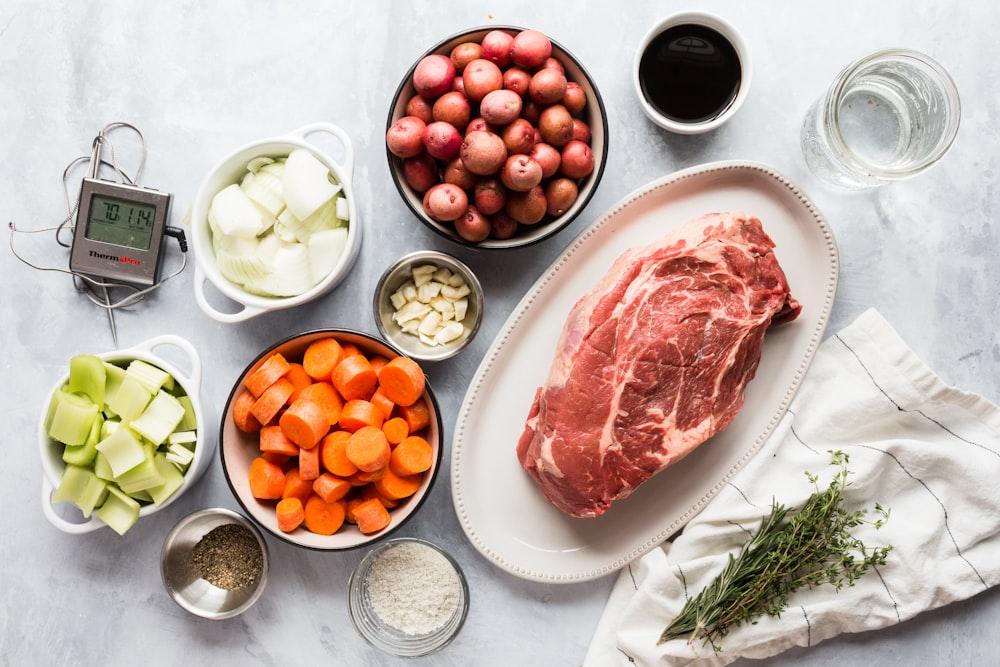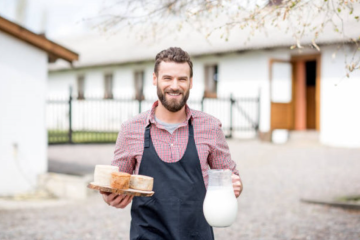Imagine this: It’s a chilly evening, the kind that beckons for a heartwarming meal. You’ve decided on a roast, not just any roast, but a meal that promises to be a symphony of flavors, textures, and aromas. The very thought of it sets your taste buds tingling with anticipation. But how do you transform a piece of meat into a culinary masterpiece?
This is where we step in. We’re not just talking about throwing a chunk of meat into the oven or slow cooker. We’re talking about an adventure, a journey through choices of meat, whispers of herbs, and the slow, tender dance of heat and time. Whether you’re a seasoned chef or a curious novice, the path to the perfect roast is paved with decisions and details that can turn your meal into a memorable feast.
So, pull up a chair, sharpen your knives, and get ready to explore the art of roasting. From selecting the ideal cut to the final, triumphant carve, we’ll guide you through each step, ensuring your roast isn’t just food but an experience to savor and remember.
Let’s embark on this culinary adventure together, shall we?
Choosing Your Meat
When you set out to cook a roast, picking the perfect meat is the first crucial step. While beef and pork are popular choices, let’s explore the road less traveled: deer pot roast, especially when prepared in a slow cooker. Opting for a deer pot roast in the slow cooker is a game-changer, offering a unique twist to the traditional pot roast. Deer meat is celebrated for its rich flavor and lean profile, making it a distinctive choice. When selecting deer meat for your roast, aim for a shoulder or rear leg cut. These cuts are perfectly suited for slow cooking, a method that allows the meat’s robust flavors to develop and tenderize over time, resulting in a succulent and flavorful dish.
Understanding Your Cooking Equipment
The method you choose significantly impacts your roast’s outcome. Delving into three popular methods—oven roasting, slow cooking, and pressure cooking—each offers unique benefits. Oven roasting is classic, great for a crispy exterior and tender inside. For those tougher cuts, a slow cooker works wonders, tenderizing meat over hours. Pressure cooking? It’s the speedy alternative, delivering tenderness fast. Matching your meat and desired results with the right method is key to your roast’s success.
The Right Temperature Matters
Getting the temperature right is essential in roast cooking. It’s not just about the heat in your oven or cooker; it’s about the meat’s internal temperature reaching that perfect point. This ensures your roast is cooked just right, juicy, and flavorful, not dry or undercooked. A meat thermometer can be your best friend here, helping you hit that sweet spot. Since different meats have varied optimal temperatures, adjust your approach accordingly.
Seasoning: Balancing Flavors
Seasoning is where you can really play with your roast’s flavors. Whether beef, pork, or poultry, the right herbs and spices make all the difference. Start with basics like salt and pepper, then build with herbs and spices that complement your meat’s natural flavors. It’s all about enhancing, not overpowering, letting the meat’s true taste shine through. And remember, tasting and tweaking as you go ensures a perfectly balanced roast.
To Marinate or Not to Marinate?
Marinating can add depth and tenderness to your roast, especially with leaner meats. A good marinade mixes acid, oil, and seasonings to tenderize and flavor the meat. Think about the type of roast you’re making and whether a marinade fits. If you do marinate, give it time to work its magic, potentially overnight. But marinating isn’t always necessary, especially if you prefer the meat’s natural taste or are working with a tender cut.
Tackling the Timing
Cooking time is a pillar of roast perfection, affecting tenderness, juiciness, and flavor. Different cuts and meats need their own time to shine, especially in a slow cooker, where patience equals tenderness. Keep an eye on your roast as it nears the end of its cooking time to ensure it’s done just right, not over or undercooked. Timing isn’t just about a clock; it’s about understanding how heat transforms meat over time.
Basting: Keeping It Juicy
Basting helps keep your roast moist and flavorful, which is especially important in oven roasting. Periodically spooning juices or a marinade over the meat reintroduces moisture, combating the dry heat of an oven. In a slow cooker, this step is less crucial due to the moist cooking environment, but a little basting can still enhance flavor.
Let It Rest: Unlocking the Flavor
Resting your roast is a must, allowing juices to redistribute and flavors to intensify. This simple pause before carving ensures each slice is moist and delicious, not dry. The larger the roast, the longer it should rest, with a typical time frame being 10 to 20 minutes.
Carving Correctly
The art of carving can affect both your roast’s presentation and enjoyment. Cutting against the grain makes each slice tender and easy to eat, while the slice thickness can vary based on personal preference and meat type.
Accompaniments and Pairings
Choosing the right sides and drinks can turn your roast from a meal to an experience. Balance your roast’s flavors with side dishes that complement or contrast, and don’t forget about the drinks—a well-chosen wine or beer can elevate your roast to new heights.
Conclusion
Crafting the perfect roast is an art that combines a careful selection of ingredients, an understanding of cooking methods, and attention to detail throughout the cooking process. From selecting the right cut of meat to mastering the cooking time and temperature, each step is a building block toward creating a flavorful, tender, and memorable meal. Whether you’re experimenting with a deer pot roast in a slow cooker or perfecting a traditional oven roast, the key is to respect the ingredients and the process.




